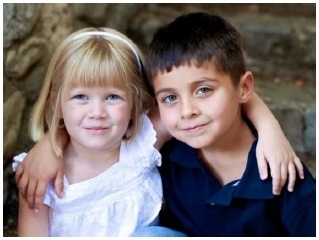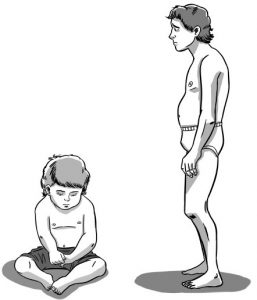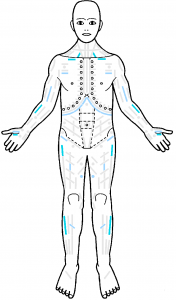Bodynamic is a Psychology Platform
The Bodynamic System is composed of multiple interrelated and overlapping models. The synthesis of these various models creates a “psychology platform”. Many additional models can be layered on top of the Bodynamic system in order to arrive at a more sophisticated and nuanced understandings of human psychology.
The Bodynamic system while traditionally applied to body-psychotherapy is not necessarily limited to that scope alone. It has also been used to help Olympic athletes reach their peak performance levels, as a method to help individuals become better business leaders, to help improve group and team dynamics and also to assist physical based therapists in understanding the psychological roots of physiological issues so they can work with greater awareness.
The Bodynamic System reach goes even further, in that societies as a whole can be understood through developmental lenses in that culture itself is part of the feedback loop that reinforces certain kinds of adaptive patterns and defenses in character structures.
The Bodynamic System touches all aspects of our lives in that it deals with the very nature of how we interact and relate with our selves, others and our environment. Our emotional substructures are what drive us forward, to make contact and create meaning. They form the basis of how we decide what is important in our lives, and how we make decisions and what kind of relationships we get into.
The four core elements of the Bodynamic System are as follows:

7 Developmental Stages
2nd Trimester → Age 12

Childhood development is an amazing and complex process. Along with the normal physical milestones such as sitting, creeping, crawling and walking, the child undergoes several stages of psychological and emotional development – in effect transformation – that is driven primarily by the child’s desire to be in deep Mutual Connection with others and the world around it.
The Seven Developmental Stages are each named for the main emotional theme that is developed in the given time frame. Each stage is also defined by various developmental movements as muscles come under conscious control and are neurally mapped in the brain. Also delineated are various emotional and cognitive capacities which we term ego functions which develop at certain times.
1. Existence

The right to exist
2nd trimester → 3 months
2. Need

The right to have needs and be satisfied
1 month → 18 months
3. Autonomy

The right to be autonomous
8 months → 2.5 years
4. Will

The right to be intentional, directed and willful
2 → 4 years
5. Love/Sexuality

The right to feel loving and sexual feelings
3 → 6 years
6. Opinion

The right to have your own opinions
5 → 9 years
7. Performance/Solidarity

The right to be a full member of a group, apart from needing to compete and perform.
7 → 12 years
Character Structures
Development is shaped by the stresses (normal and/or unusual) and traumas the child undergoes during growth. As the child’s efforts at Mutual Connection are frustrated, her body and mind build defenses that can be observed in both the body and the personality. With further growth, early defenses become the basis of future patterns of interpersonal connection, often giving rise to new defenses.
The Bodynamic System operates on the premise that defenses serve a necessary purpose and are not to be broken down lightly. Defenses can be agonizing, yet they represent creative survival strategies. Grasping that single fact allows us to really care about ourselves and others the way we are – rather than the way we “ought to be”.
All character structures exist on a spectrum which is contingent on the type and timing of nurture the child receives in development. Overwhelming emotional stress that existed early within a particular phase of development creates a certain kind of psychological and emotional resignation which is then mirrored physically in the body. This results in character deficiencies and a loss of emotional and psychological skills.
When the child has had the opportunity and support to develop emotional and psychological resources but then emotional stress came later on in a particular phase of development, this will result in a “holding back” typically of anger, and a type of emotional armouring occurs. This is then also reflected in the neuro-somatic organization of the body.
3 Character Positions for each Developmental Stage

Early Position
- Give up a part of the self to maintain the relationship.
- Leads to resignation in the muscles and fascia.
- Leads to feelings of emptiness, lack, like something is missing…but not sure what.
- “Black Holes” You don’t know what, you don’t know.
- Lower Energy
Healthy Position
- Feels resourced
- Marked by feelings of Confidence and competency
- Can lead to “white holes” things you know and just take for granted.
- Flexible Energy

Late Position
- Give up relationship to maintain a part of the self.
- Armoring and shielding.
- Higher Energy
- Results in muscular tension
Bodynamic Analysis is mindful of a constant interplay and intimate balance between mutual Connection on one hand and individual Dignity on the other. Character defences arise from the child’s deep urge to have the greatest possible Mutual Connection with the central people in his/her life – sometimes at the cost of her/his individual dignity.
Stated in first person, just like I can maintain or break Mutual Connection, I can either maintain my individual Dignity or relinquish it. To maintain my individual Dignity in an interaction with others, I must respect my own self so that my way of being, my feelings and my actions are consistent with my authentic self – my actual needs, impulses, preferences, wishes and views.
The way I can lose my Dignity is when my interaction with another person or persons becomes too challenging for me, to the point that inside myself I need to move away from the contact, breaking the Connection – but I don’t. Instead, I maintain the Connection but in the process I must relinquish my individual Dignity.
The Bodynamic Character Structure model is – among other things – an encyclopedia of Character Structure Positions that explain why and how a person would choose to preserve Connection at the expense of Dignity – to remain in contact with a person or a situation that she really can’t tolerate, because in that instance losing Connection is too frightening while losing her individual Dignity is more preferable of two undesirable choices.
And conversely, every person has at some point withdrawn from contact that was too challenging in order to be able to preserve her individual Dignity. This explains yet another extreme of the human condition that we often witness: No mutual Connection but a lot of individual Dignity in utter loneliness.
The Bodynamic System places priority on making conscious choices about our interactions and our ways of connecting, so that we don’t have to compromise our internal integrity – individual Dignity just to have contact. We learn to establish and maintain a balance that includes deep contact with other persons, while at the same time we honor our own Self by maintaining our individual Dignity.
Character structures are the formative and creative results of splits occurring in the aforementioned developmental stages.
Developmental Splits

The Bodymap
125 Muscles & Fascia mapped for their Psychological Abilities

A fundamental concept of the Bodynamic System is that muscles tense up in order to accommodate the strong sensations that accompany emotions during childhood development, a condition termed hyper-responsive but under different conditions muscles may become flaccid and resigned, unable to cope with stronger stimuli, a condition termed hypo-responsive.
Marcher and her colleagues also found that each individual muscle – and groups of related muscles – correspond to highly specific stages in childhood development and adolescence, and also to specific functions of the Ego. Every muscle in each stage is correlated with its corresponding psychological function.
The above character structures were originally developed by examining the psychological themes of individual muscles and fascia and looking for age appropriate patterns and themes. Delving deeper, given psychological functions are mapped to the body which results in a detailed analytical tool called the “Bodymap”.
This can provide a detailed analysis as to how, grounded or centered someone is. It also for example lets a person know what kind and how effective their boundary making skills are.
Complexities can emerge and be understood such as someone being centered in their will power but perhaps not grounded in their will power. Or someone may feel supported in their Autonomy but perhaps not their Opinions. These subtle nuances can be seen when examining a Bodymap.

3 Examples of front body muscles from Will Character Structure
Whereas previous body oriented psychotherapies adhered to the Reichian concept of armoring or rigidity, the Bodynamic system found this limiting in practice. Very often clients who were made to work with armoring alone seemed to regress in terms of life function. Noting this, Bodynamic pioneers researched muscle response patterns in detail and eventually formulated the concepts of hypotonic and neutral muscle response.
Whereas earlier approaches seemed to ignore the possibility of hypotonic resignation, the Bodynamic team was one of the first to shift to a Body-Dynamic approach that sought to support hypotonic muscles in a way that we now call Resourcing so that hyper-responsive muscles could relax in a more natural way that was gentle to the overall system. The Bodynamic approach allows for more integration, instead of the fragmenting that sometimes occurs with strict Reichian approaches.
The concept of hypo-responsiveness is unique to the Bodynamic System. Muscles that are hypo-responsive need support and contact to grow-up. Neutral muscular response/responsiveness is also a concept unique to the Bodynamic system. Neutral muscle response supports the development of new psychological resources, or access to more choices in life.
New therapeutic capabilities
The new ability to recognize and work directly with psychological resignation and to build new ego resources transforms the nature of psychotherapy. Working in the context of a therapeutic relationship, clients can learn to awaken undeveloped impulses and skills. The acquisition of these new ego and motor resources, which are exactly the ones missing but most needed, greatly facilitates working through developmental issues with inner safety and empowerment.
Working with somatic resignation transforms the nature of body psychotherapy, enabling the therapist to understand when it is necessary to work in a gentle and supportive way in order to develop or restore resources that have been given up. The therapy does not proceed by breaking down resistance or forcing emotional release, but by transforming clients through the awakening of profound states of body awareness. This awakens resources deep within the self, which are then encouraged to emerge.
11 Ego Functions
The Ego Functions are formed and developed throughout life. They are like ‘paths’ which run through the developmental phases (Character Structures), and the different phases give a certain Code in the Ego Functions.
The Bodynamic System includes and operates with 11 Ego-functions:
Example of the Ego Function Centering
The Ego Function Centering concerns the human skills of being in contact with oneself and the degree of self-esteem or the valuing of one’s own uniqueness.
The Ego Function Centering is divided in 4 sub-functions. The areas on the body which empirically are connected with this Ego Function and the sub-functions are:
- Awareness of one’s own center
- the deep muscles of the pelvis which connect the thigh and the lower back (psoas major, iliacus).
- Filling out from the inside
- some smaller muscles which are close to the pelvic floor (gemelli, obturator internus).
- the buttocks (sacrotuberous ligament, piriformis, gemelli, quadratus femoris).
- Being oneself in one’s different roles
- a flat muscle between the shoulder blades which pulls these together (rhomboids).
- Feelings of self-esteem
- the sacrum.
- the chest muscles (pectoralis major and minor).
Through training the sensing of one’s center the client’s ability of sensing what he/she likes, dislikes; what he/she wants/ takes an interest in, and what he/she needs is increased.
It is possible to work with the client’s centering by making the client take an interest in sensing the pelvic floor (rotate the thighs slightly outwards, pull the lower part of the stomach in), the deep muscle of the pelvis (psoas), and the deep muscle of the lower back (quadratus lumborum), or in other words the bodily container in the lower part of the torso.
You can add more experiential and visual ways of working, such as, how does it feel in this center in the middle of pelvis? are there colours? what forms or shapes are there? etc.
Many take pleasure in sensing a centering close to the spinal column, more like a center-line vertically than as a point/ a center in pelvis.
If you want to get closer to the connection from an inner experience of centering to a more outgoing energy, more centered around the roles you have in the world, then the muscles between the shoulder blades and the big chest muscles (and the way you ‘boast about’ more or less) are obvious bodily areas to direct questions to and to do movement exercises with.
Trauma
Distinguishing the different types of trauma from basic developmental coding.

Developmental Trauma
Shock Trauma
Complex PTSD
Base Coding
The Bodynamic way of dealing with Shock Trauma is unique in that it takes a developmental resource approach. Sensitive attention is given to what resources a person may or may not have from childhood and how that relates to their ability to resolve Shock trauma. In the vast majority of cases Shock Trauma will have immediate effects on Character structures from Existence, Need, Autonomy and Will and negatively impact resources available from those areas.
Shock also tends to hit the muscles in the knees, upper hip and neck area as depicted in this Bodymap template.
Thus when working with shock special attention care is taken with regards to those specific areas where a person may have been hit hardest. The muscles affected by Shock are never directly dealt with at first as they are outside of conscious awareness and can’t be meaningfully accessed. The emotions and experiences with Shock Trauma are then dealt with utilizing other resources to support resolution in other aspects of the self before the parts most severely impacted can be worked with.
Shock Trauma and developmental trauma are seen as being distinctly different although to resolve Shock Trauma there is an important developmental trauma piece that usually comes first that needs to be attended too.
In the Shock trauma training there is a focus on building skills in 4 of the 11 Ego Functions. Those namely being:
- Centering
- Grounding
- Energy Mangment
- Boundaries
Therapeutic Methods
Where theory meets practice
When a person’s dominant ego aspects and character structures can be ascertained, then it is possible to go in depth and utilize the ego functions of certain muscles to resolve given life challenges in a person.
While the analytical capability of the Bodynamic system can be intense and precise, the execution of the therapeutic method is more straight forward.
The greatest resolution and healing comes from the dynamic relationship between the therapist and the client as the therapist provides a safe space and framework, and compassionately affirms the building of new psychological resources in the client or the gentle resolution of barriers and defenses that may have been created as a form of protection.
Fine emotional attunement is of paramount importance here for it is through the Mutual connection between therapist and client a person’s full dignity can be created and/or restored.
Understanding and dignity rest on the theoretical foundation which allows precise calibration to where the client is at.
Bodynamic Analytic process














